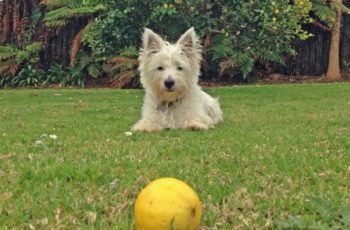
Rabbits can usually mingle around with other pets pretty well, like for example a cat. However, it can be tricky if you are pairing a rabbit to the dog, as they are primarily very different. You see, dogs are primal by nature since they often regarded as predators when they are in the wild. Rabbits, on the other hand, are regarded as the prey! So it may seem very unlikely or even possible to pair up the rabbit to the dog, hence if you ever intend to introduce a rabbit to your dog, you will need to take extra precaution so that the unique grouping can work out. Here are the essential XX steps that you can take so that the entire procedure can be a stress-free one for your rabbit.
Prep the dog
When you bring the rabbit home for the first time, you should ensure that your dog is proper prepped for the occasion. By this, we mean that your dog should have been trained to respond to your commands, whether by using a training collar or by using a clicker. This is essential as you do not want the dog to rush to the rabbit at the first instance without responding to your command.
Choosing a proper place
To introduce the rabbit to the dog for the first time, always ensure that you have selected a place that is neutral, and this means selecting a place that is not frequented by the dog. Some examples are the kitchen or even in your bedroom, assuming if the dog is not allowed into both areas. This will help to ensure that the dog does not bring up its territorial senses.
Place rabbit in enclosure
Once you have decided on the neutral ground, place the rabbit into its enclosure and bring it into the area. At this point of time, the dog should not be present yet. Allow the rabbit to sit in that position for about an hour or two to allow it to acclimatize to the new environment. If the rabbit is showing signs of stress, you should delay the introduction of the dog as you wouldn’t want the first session to be a bad encounter or experience for your rabbit. Signs of stress includes biting on the enclosure or fidgeting around the enclosure itself.
Put the dog on a leash
If the rabbit is showing no sense of anxiety issues, you can proceed to bring the dog into the neutral space, but with a leash on. Get a family member to help carry the dog and slowly inch into the room while you keep a watchful eye on your rabbit’s reaction.
Proper introduction
This is perhaps the most crucial step. For the first proper introduction, you must pay extra attention not to exhibit any sudden movements that might scare your rabbit. Allow the dog to slowly inch towards the enclosure and let it sniff around the place. I would suggest peppering in positive words so that the dog is encouraged to explore in a friendly and none-domineering manner. Once you notice that the dog is responding correctly, you can start to bring the pair closer together.
Removal of enclosure
Assuming that all of the above have been done properly, you can remove the enclosure, but take note not to allow the dog to have a free reign of movement. Keep it tightly leashed so that you are still in control of the dog. You can allow the rabbit to slowly inch towards the dog rather than the other way around. If the rabbit decides to run away anyway, it is a sign that it is still not comfortable in meeting the dog, and you should stop the session.
Keep a watchful eye
If both the dog and the rabbit are showing no signs of resistance or distress, you can allow a little bit more freedom to the dog. Gradually, the dog should be allowed to move around freely. However, that being said, you should not leave the rabbit and the dog together alone without your supervision at least for the first few meetings as you want to be sure that the dog will not be aggressive towards the rabbit.
Bite sized session
To ensure that the introductory sessions can be kept as positive as possible, keep each session short. !0 minutes will be a good duration for a positive session.
Separate feeding areas
Keep the feeding areas separate so that territorial boundaries are not breached.
Wrapping up
In time to come, both the rabbit and the dog will be comfortable with one another. While the training might take some time, the extra bit of patience is ce

